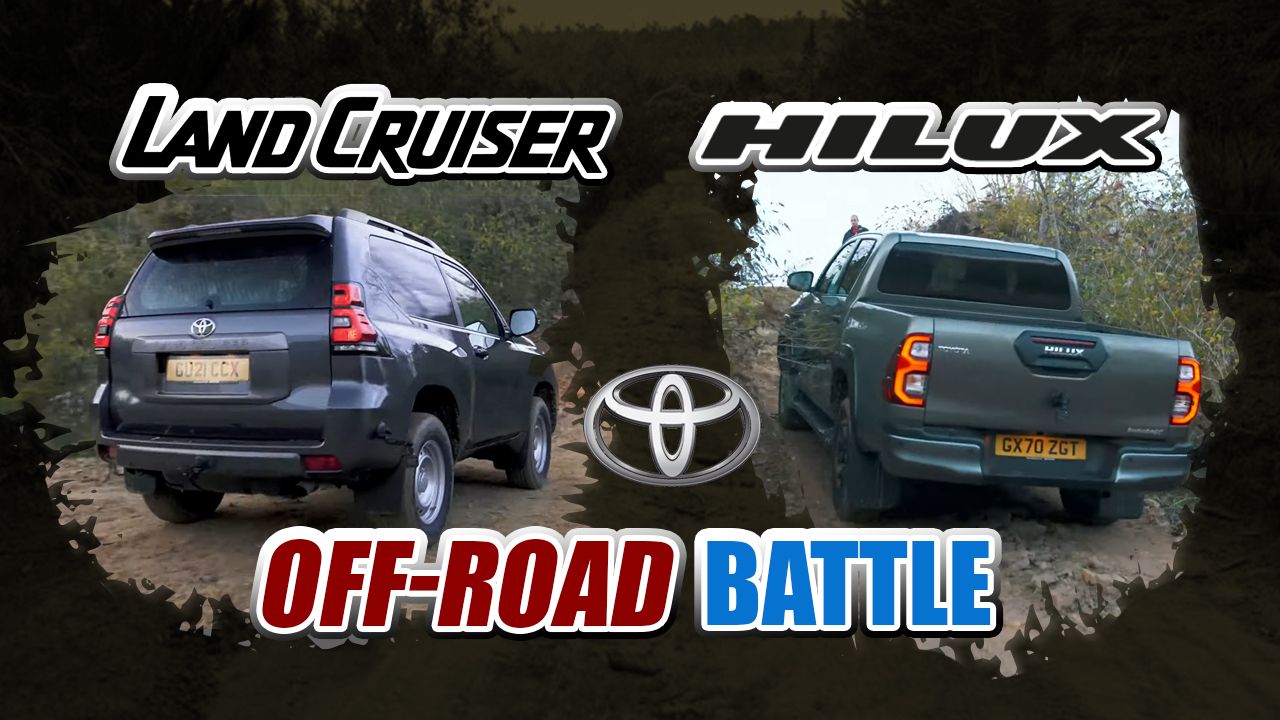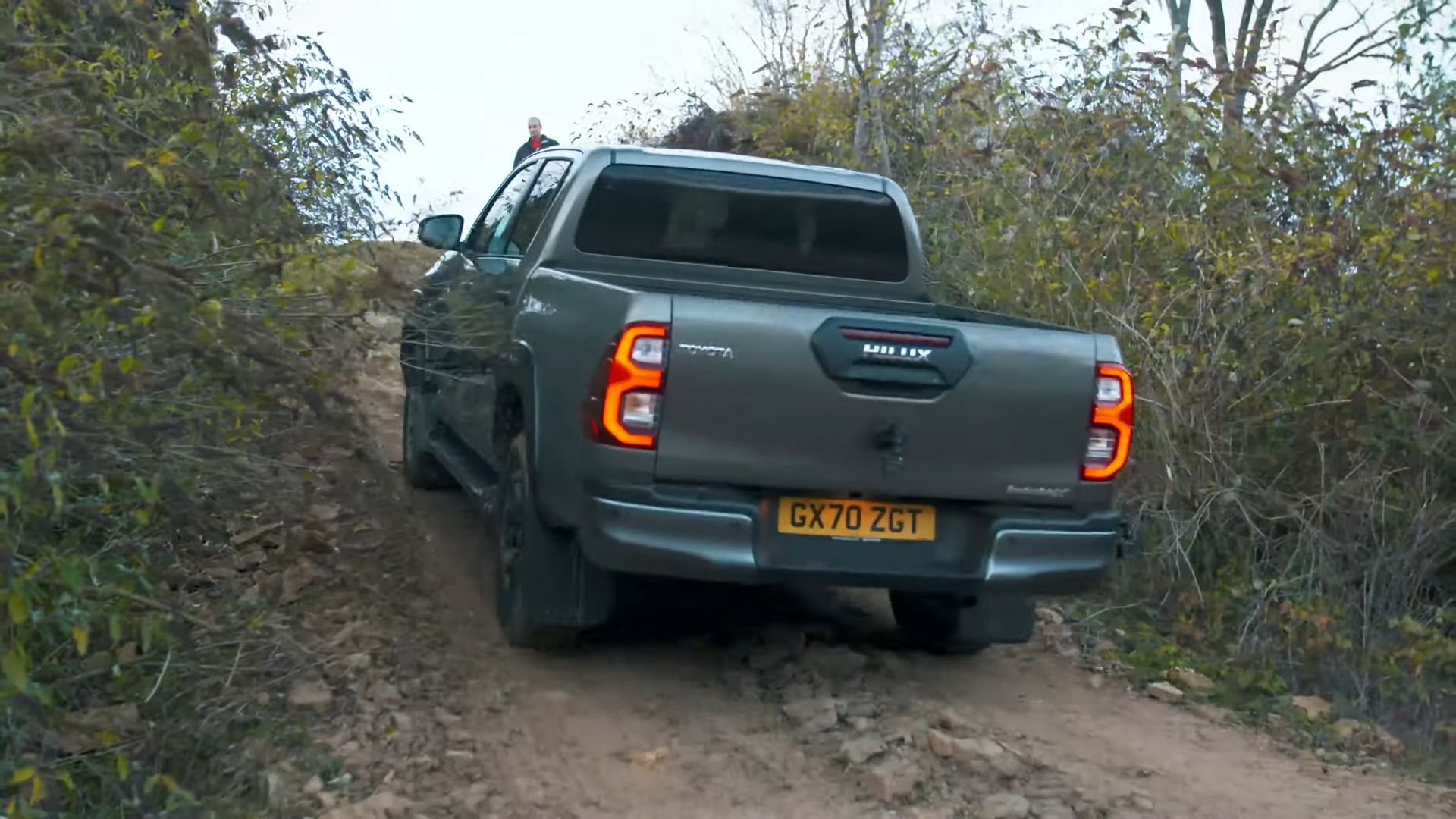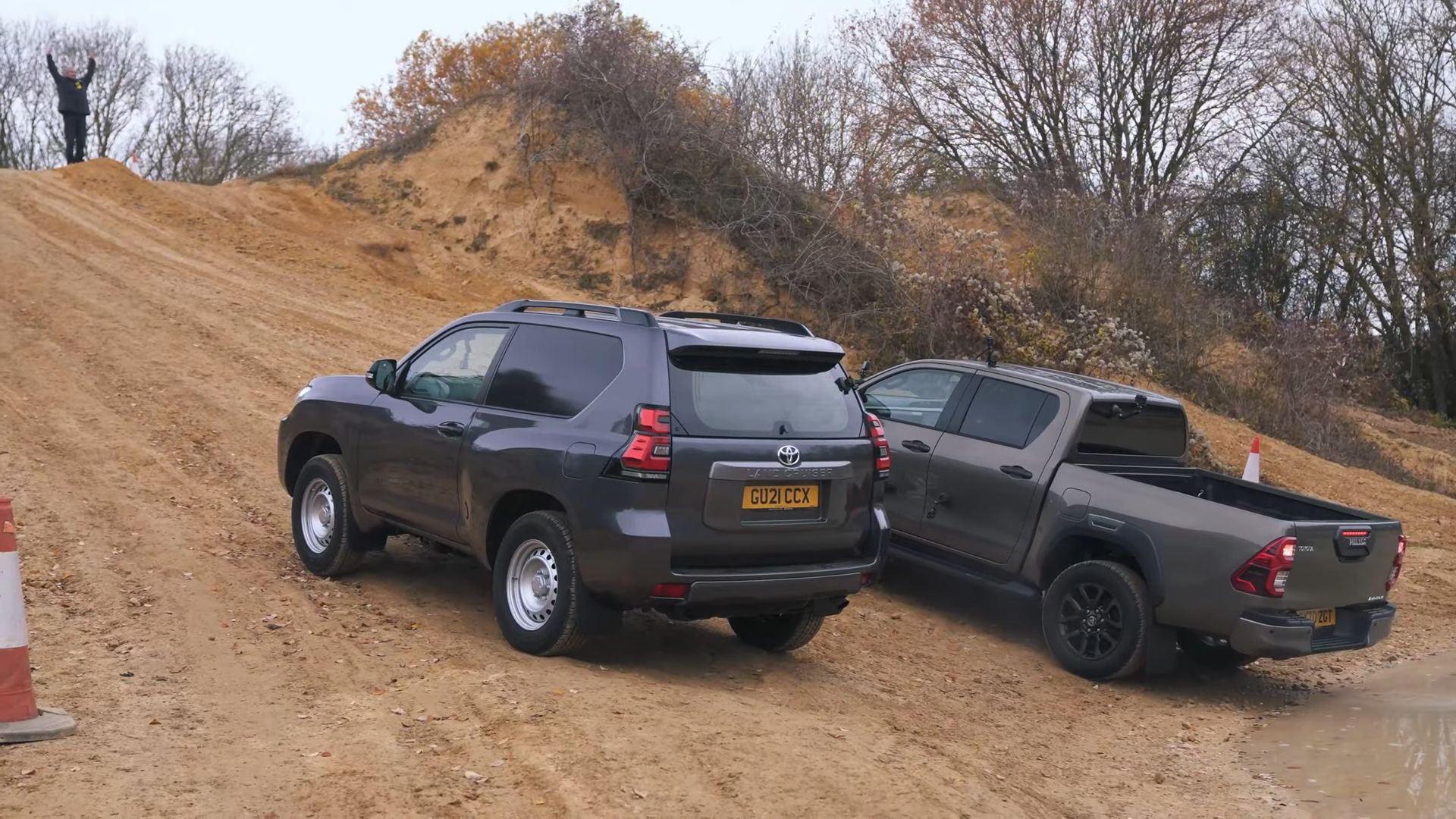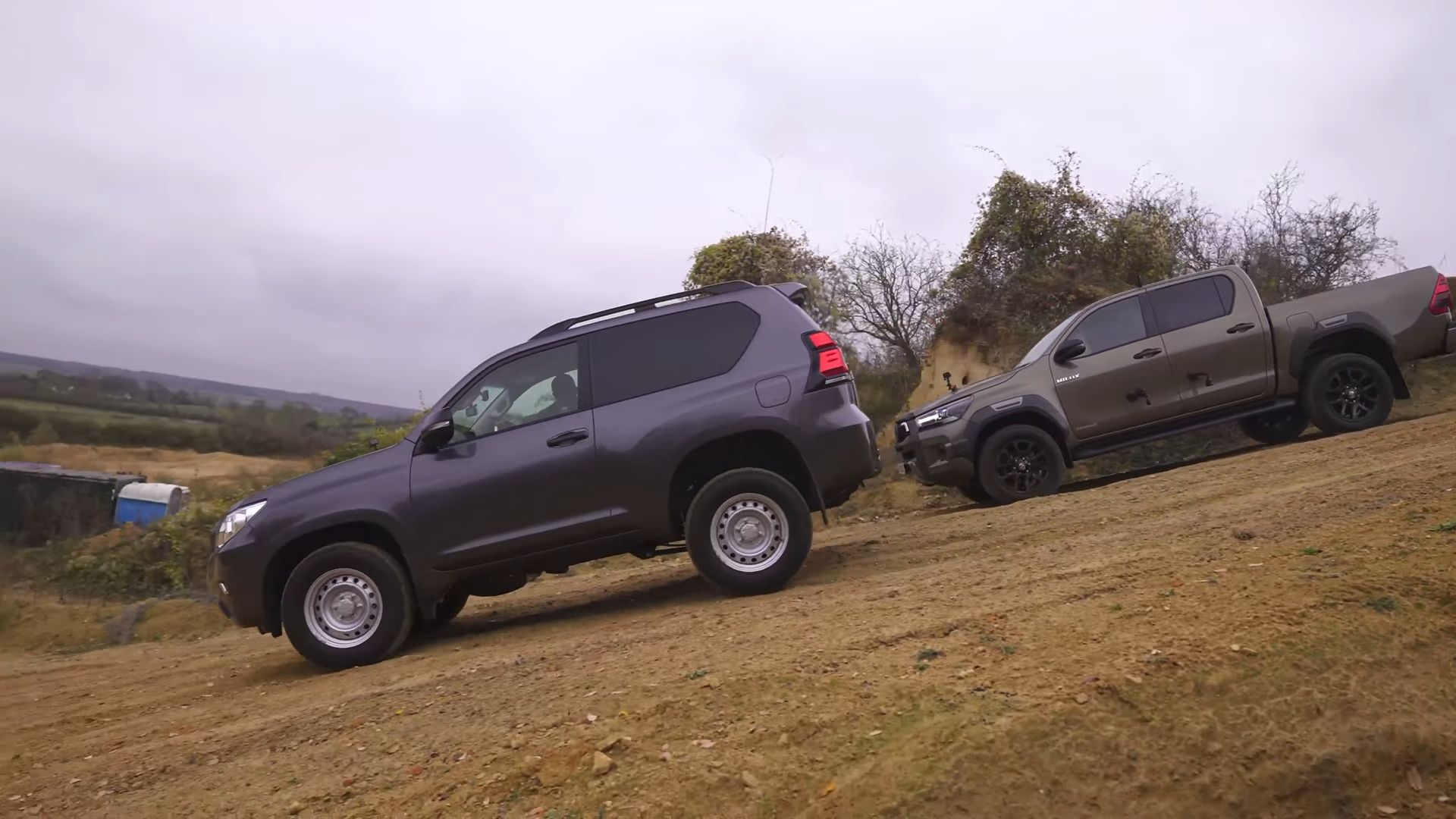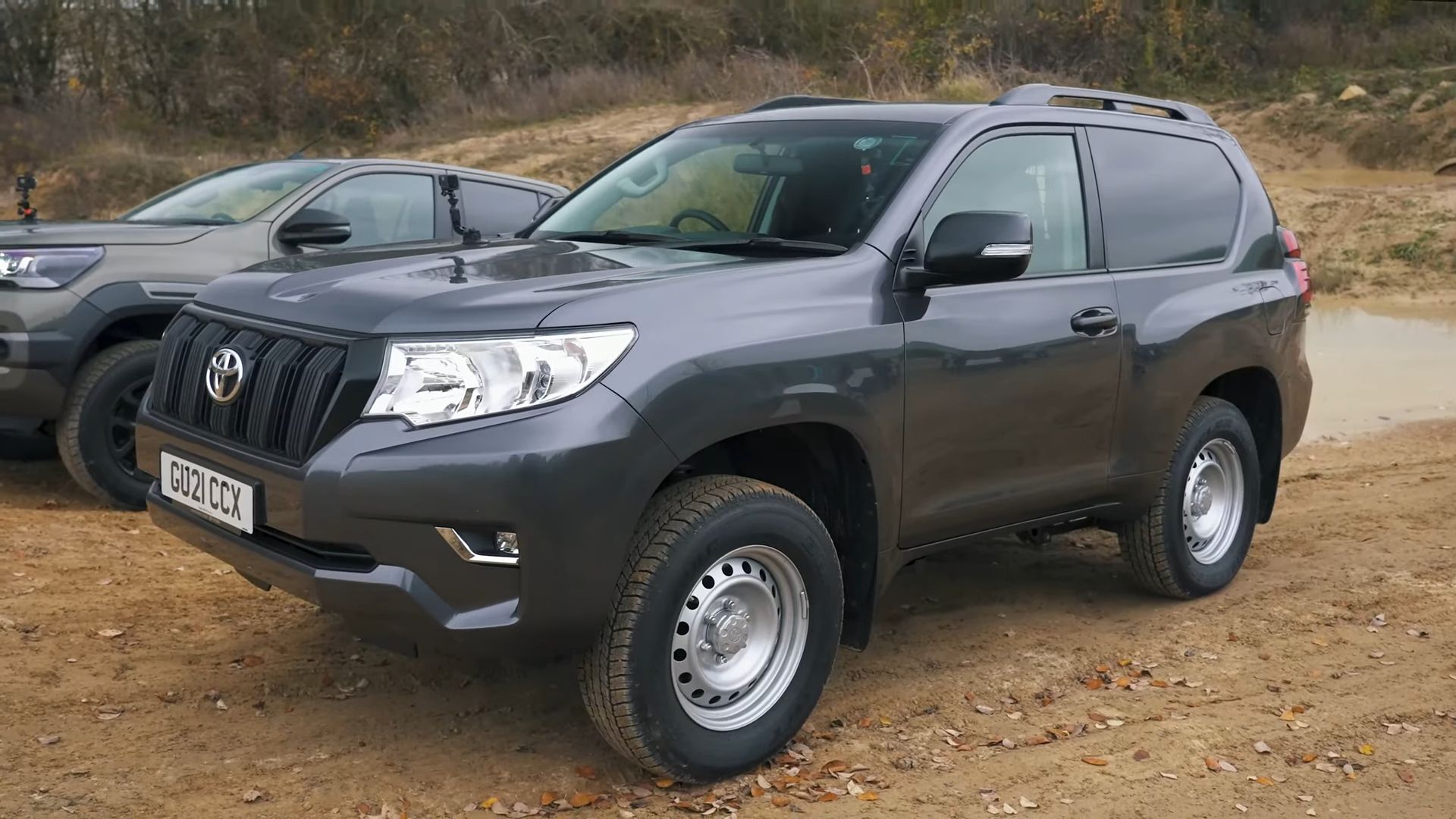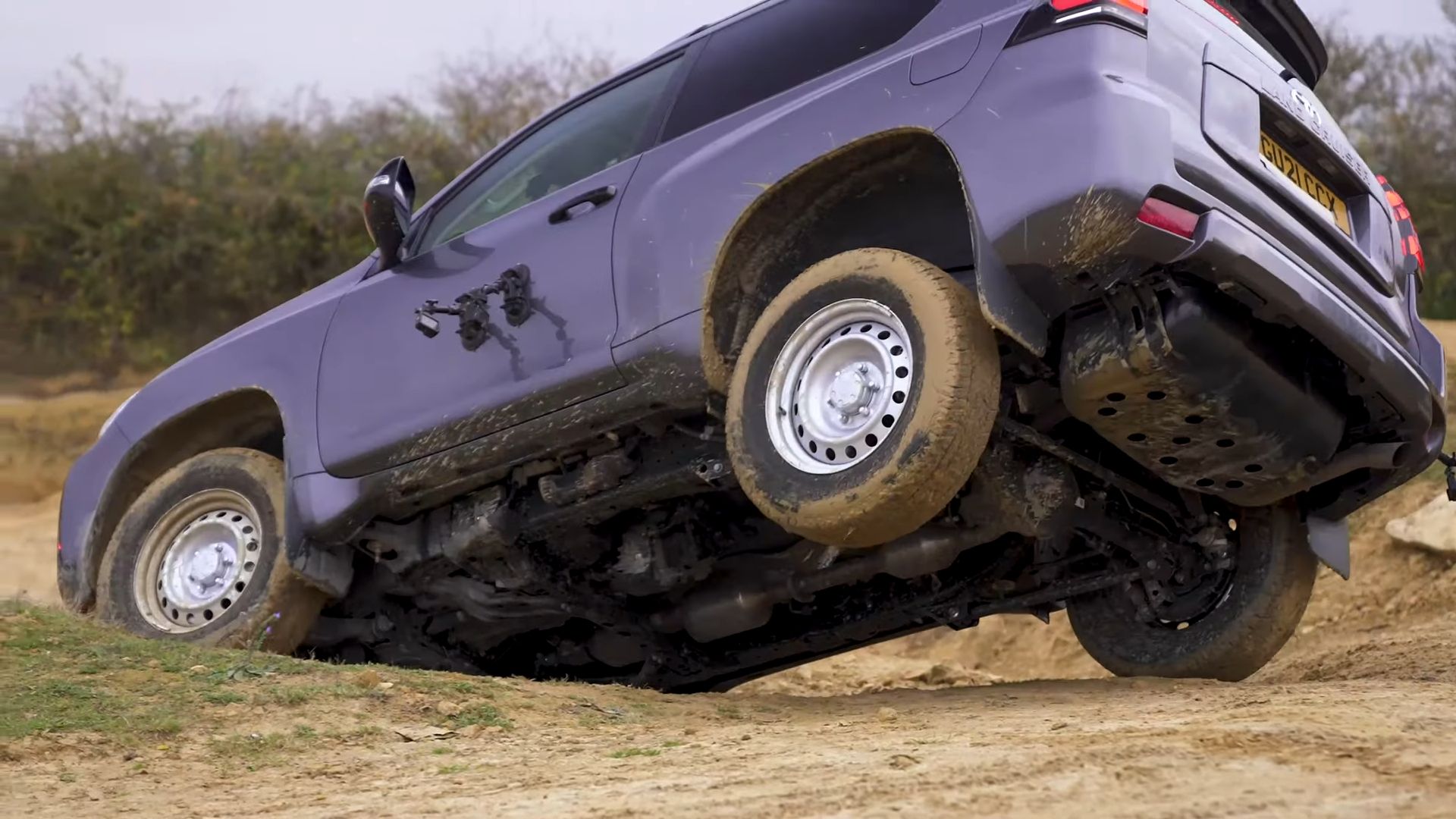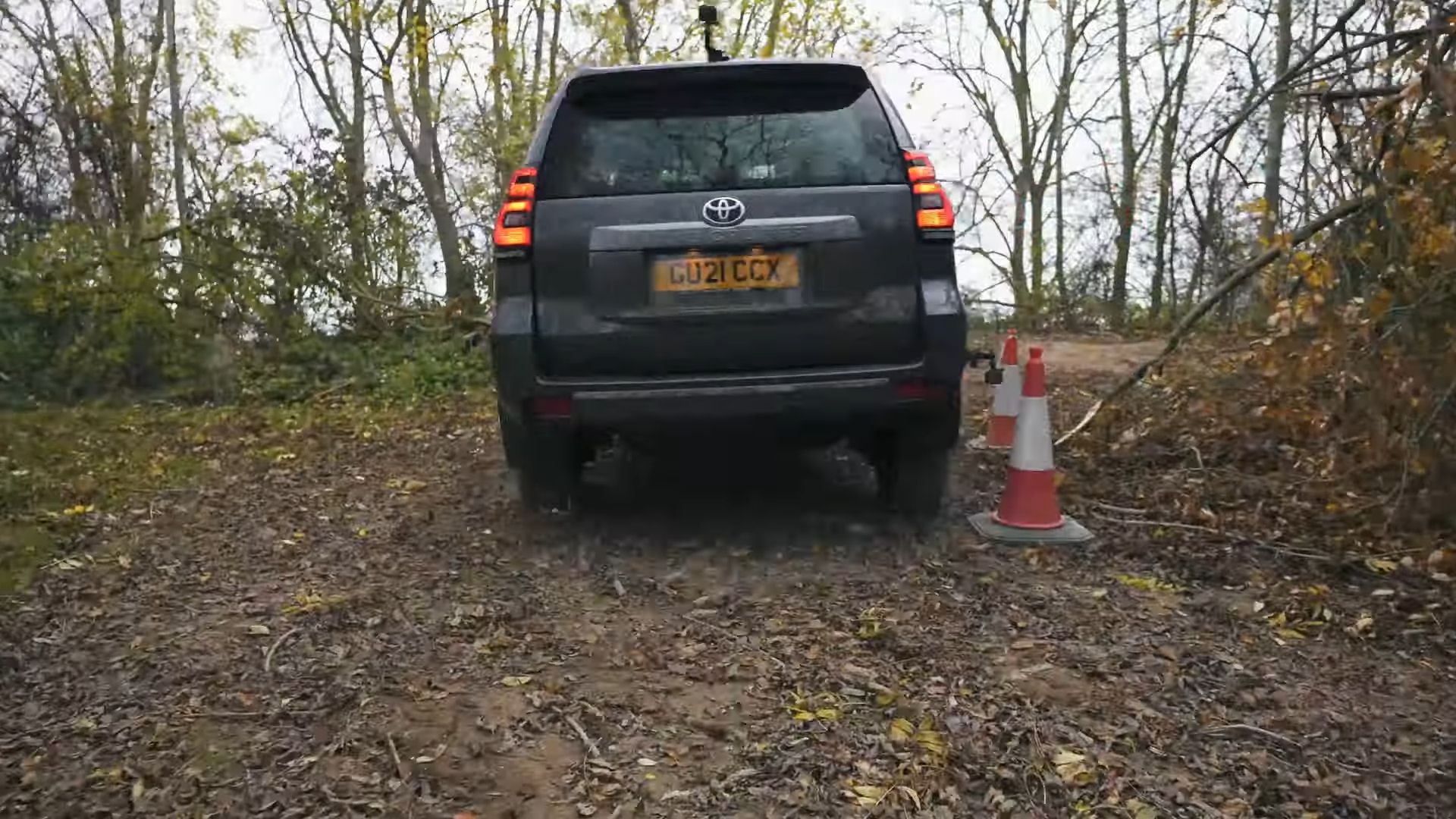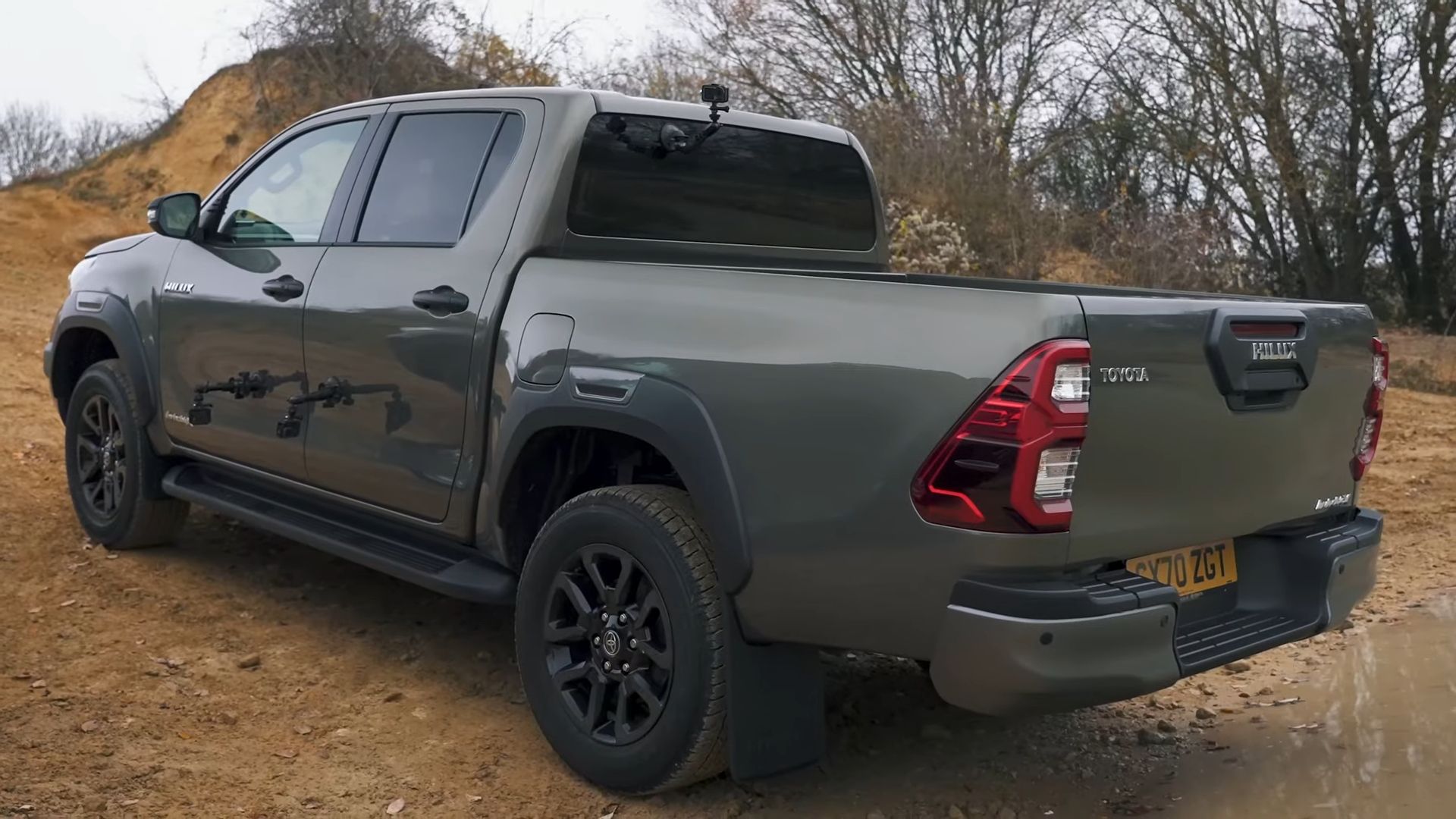CarWow has been synonymous with its drag racing videos on YouTube, but this time they have something different in-store. This time, two Toyota off-road vehicles are being pitted against each other, to determine, which is the better off-roader and workhorse? Moreover, both the Toyota Hilux and Toyota Land Cruiser (Prado) are not being sold on the US market, so the real question is, are you missing something?
Toyota Land Cruiser
Starting off with the Toyota Land Cruiser, it’s the short-wheelbase, two-door version of the J150 Land Cruiser. It’s also the commercial version, which means that, instead of rear seats, you get a larger cargo area and the base steel wheels, without wheel covers. The rear quarter windows are also blacked-out.
The car features standard equipment and comes with a 2.8-liter, inline-four turbodiesel that makes 204 horsepower and 309 pound-feet (420 Nm) and is mated to a six-speed manual gearbox. This version of the Land Cruiser starts at £37,000.
Toyota Hilux
The Toyota Hilux featured in the video is the InvincibleX. It has a double-cab and the same 2.8-liter, inline-four turbodiesel. But while power is identical at 204, torque is increased to 369 pound-feet (500 Nm), for more pulling power. It also has a six-speed automatic.
While both cars have four-wheel drive, the Hilux gets an electronically-controlled, central locking differential (like in the Land Cruiser) and a rear locking differential. As equipped the Toyota pick-up truck sits at £42,000.
Test One: King of the Hill Drag Race
Both vehicles line up for a drag race up an inclination, with the finish line being at the top of the hill. You would think that the manual Land Cruiser would be at a disadvantage, but it actually managed to beat the automatic-equipped Hilux, by at least a car length, despite having less torque. Matt awards the Land Cruiser two points, while Hilux gets one point.
Test Two: Downhill Drag Race, But With a Twist
The downhill drag race is not about finishing first, but finishing last. It’s a test of the two vehicles’ hill-decent systems. The Toyota Hilux is expected to win this one, as it has an automatic gearbox and a hill-decent control system, which automatically applies the brakes.
The Land Cruiser, however, does not have hill-decent control. It does have low gears, so leaving it in the first gear should do the trick.
As expected, the Hilux wins this one, convincingly. With that being said, the Land Cruiser’s hill-decent control was still impressive, just not as impressive as the Hilux’s. That's two points for the Hilux and one for the Land Cruiser.
Test Three: The Hairpin Challenge
In this test, the Land Cruiser and Hilux will each take turns across a technical section, where the turning point is a very tight hairpin. Think of it as a rally stage – the vehicle, which completes the course quicker, wins. There are bits where both vehicles can bottom out, but the shorter Land Cruiser may be at a slight advantage here, especially with its 10.4-meter (34.1 feet) turning radius. Land Cruiser sets the benchmark at 21.63 seconds.
Matt then drives the Toyota Hilux through the same course. Immediately, the bigger size of the Hilux creates issues in the tight technical section. Matt even manages to hit a tree at the hairpin’s exit. After a lot of swearing, Matt crosses the line. Despite being in full-sport mode and leaving the differentials open, Hilux finishes in 23.4 seconds. Two more points for the Land Cruiser and one for the Hilux.
Test Four: Suspension Travel and Chassis Control
The two off-roaders tackle a stretch of slippery surface riddled with holes and bumps that finishes with a slippery slope they have to climb. Matt’s money is on the Hilux, which has a rear locking differential and more leverage, because of its longer wheelbase.
The Land Cruiser struggled a bit, without the rear locking differential, but eventually, the stability control kicked in, allowing it to climb up the slope. The Hilux, however, made it look easy, It had much better chassis control and needed less time to finish the course. After this, both vehicles are even, with six points each.
Test Five: Turnover Angle
The turnover angle is the maximum sideways angle, you can drive at before the car “topples over”. The Toyota Land Cruiser is advertised as having a 42-degree turnover angle, but t here’s no available data for the Toyota Hilux. Both Toyota off-roaders go at it, in low gears and with locked differentials.
Hilux goes first and looks composed. This is also a test of chassis rigidity. The Land Cruiser was more easily upset, due to the shorter wheelbase and coil-springs. The Hilux has leaf springs at the back, for when the bed is loaded. The Land Cruiser also has a lower ground clearance, which is why it bottomed out on a few occasions, despite the shorter wheelbase. In the end, both off-road vehicles did great, even if there was “a bit of grindage” in the Land Cruiser.
Test Six: Hillclimb
As Matt explains it, the last and decisive test is all about “grip, traction, and the ability to just power up a hill”. The hill is steep, rocky and slippery, which means one of the two cars may not be able to make it. The Hilux goes first and despite the lively rear end, it manages to climb up the steep hill. Next up is the Land Cruiser, which thanks to the softer suspension, was smoother up the hill. Matt put it in low gears and locked the central differential, which made it look easy.
Conclusion
In the end, both Toyota off-roaders are tied with each having nine points. This just goes to show that both vehicles are great in their own right. That said, while the Hilux is technically more car for the money, the Land Cruiser commercial is a bit more sophisticated and comfortable. It’s also amazing to see Toyota still makes a base version that’s really base and a short-wheelbase version of a full-size SUV.
The Toyota Hilux is still the better workhorse, as it’s just more flexible in this regard. However, if you need to get up a hill, the Land Cruiser might be the slightly better option.

